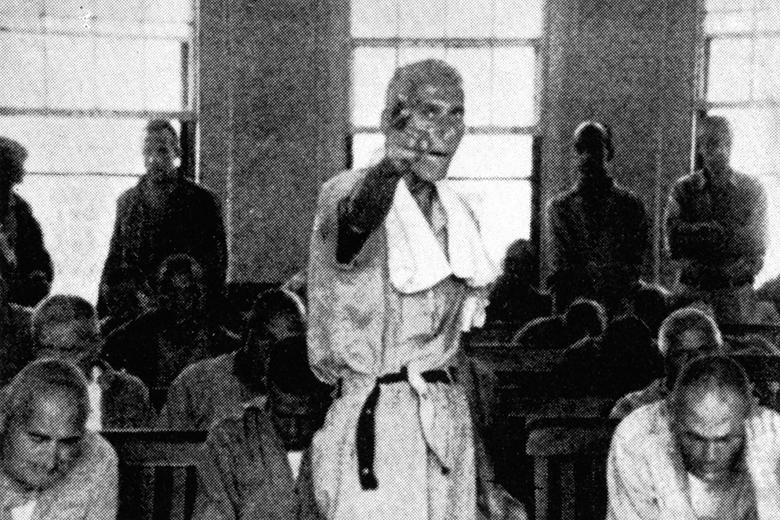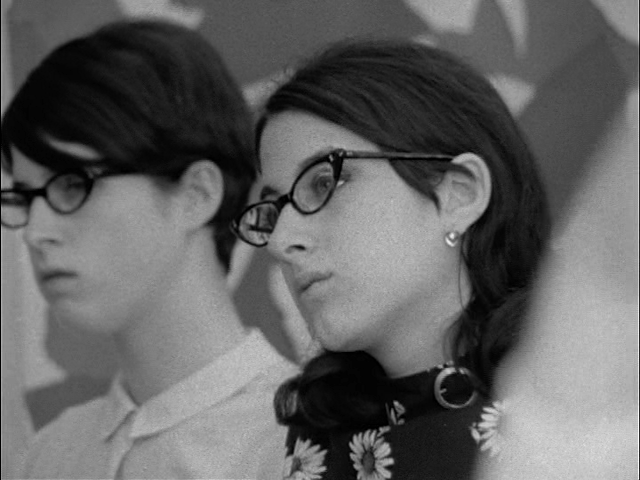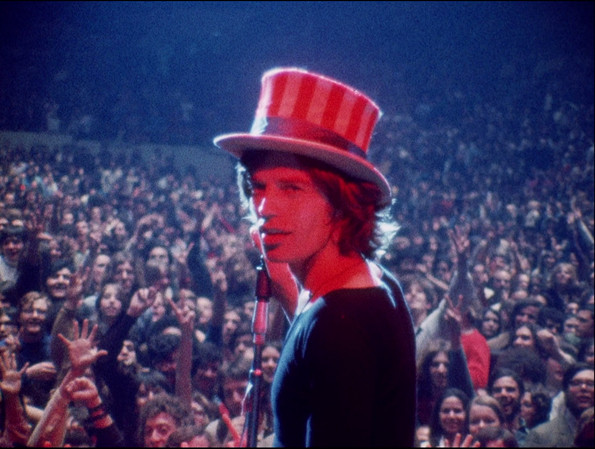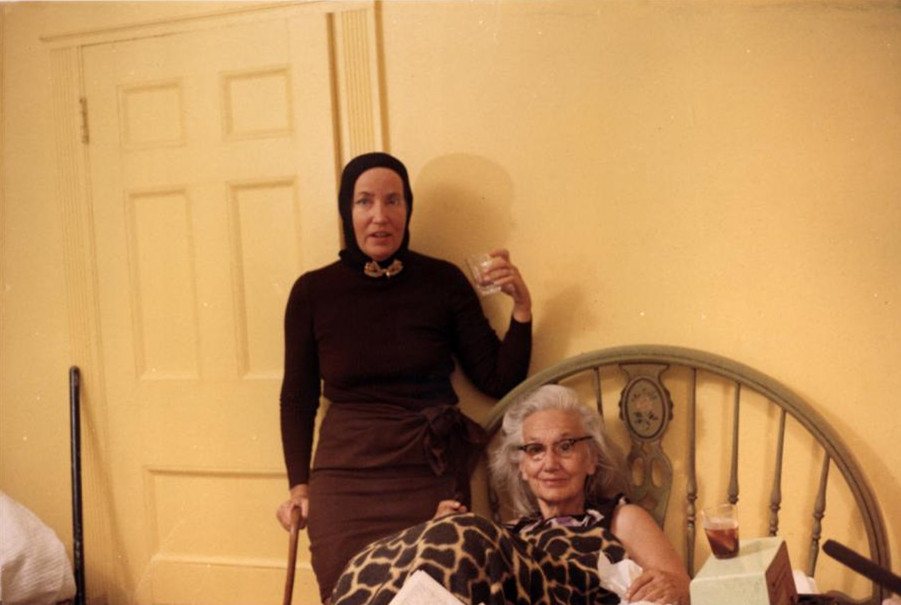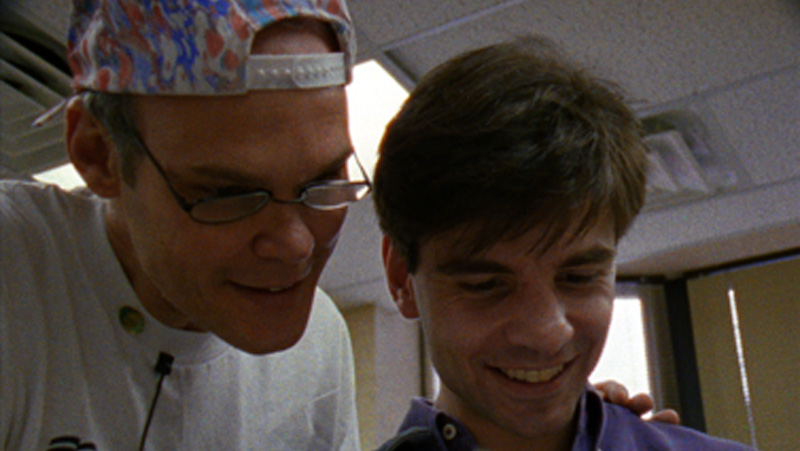5. Titicut Follies (1967)
Frederick Wiseman is a prolific visionary who has managed to film in many locations where others have been denied access (an Air Force missile training facility, Missile (1987), life with the American Ballet Theatre, Ballet (1995), a nude dance club, Crazy Horse (2011), and more than two dozen other unique settings). Wiseman was a lawyer before making his first documentary feature, Titicut Follies (1967), at the Bridgewater State Hospital for the criminally insane in Massachusetts.
The film is a bizarre and sometimes disturbing look at the poor level of care these inmates received but it also culminates with a stage show put on by the prisoners, “The Titicut Follies,” which takes its name from a river near the facility. Massachusetts Officials were so upset with the final product that they sued to shut the film down and were largely successful for more than two decades. They claimed they were doing this to protect the dignity of the inmates but it was the failure of their institution they are actually trying to hide.
Years later, Massachusetts was sued by the family of former Bridgewater prisoners and their lawyer argued that if Titicut Follies had been more widely seen it could have brought about real change in the conditions at that institution and elsewhere but it is an undeniably powerful piece.
6. High School (1968)
Frederick Wiseman’s second feature documentary looked at a different institution that many young people feel trapped in. Shot at Northeast High School in Pennsylvania, this will bring back your uncomfortable memories of high school, no matter where and when you attended. Wiseman scoffs at the idea that movies can be objective but he also has a personal ethic to be true to what he saw and never stage anything or use narrative to explain it or his thoughts on it.
Most of the magic in his work happens in the editing room, where he looks for a dramatic rhythm that fits the piece and does not necessary tell a straightforward beginning, middle, and end narrative. He is arguably the most consistently great, “fly on the wall,” filmmaker and High School is surprisingly enthralling even when compared to his more obviously dramatic subjects.
7. Salesman (1968)
The Maysles brothers, Albert and David Maysles, along with Charlotte Zwerin made this gripping tale of four door-to-door Bible salesmen trying to peddle expensive copies of the good book to impoverished customers. There is great intimacy in the fact that we (as virtual members of the film crew) are invited into people’s homes and leave with a dirty taste in our mouths over what we have been a part of.
It is not an attack on Christianity or capitalism – though some have seen it that way – but it does raise questions about how these two staples of American Society can be intermixed in unhealthy ways. The Maysles are not complete, “fly on the wall,” purists but they avoid formal interviews and only occasionally interact with their subjects on screen; prompting them for more information but not directing them.
8. Gimme Shelter (1970)
Albert and David Maysles teamed up again with Charlotte Zwerin to record the Rolling Stones’ 1969 U.S. Tour and ended up chronically what many have seen as the death of the 60s at the Altamont Free Concert.
The show was billed as, “The West Coast Woodstock,” but things took tragic turn when the Hells Angels biker gang was hired to do security and allowed to drink beer on the job. There are some interesting characters in the film, including Melvin Belli, who had been Jack Ruby’s attorney when he was put on trial for shooting Lee Harvey Oswald.
9. Grey Gardens (1975)
The Maysles brothers also made the greatest cult classic in the cinéma vérité/direct cinema ethos, with help from Muffie Meyer and Ellen Hovde. Much like midnight screenings of The Rocky Horror Picture Show (1975), where fans dress up as the characters and speak all the line, Grey Gardens has a similarly devoted, though smaller following.
The action centers around a mother and daughter, both named Edith Beale, who live in a once beautiful but now rundown mansion know as Grey Gardens, in a wealthy New York Community. Through the interaction of the two Edith’s we get a sense of how these upper class women fell to such depths – living among a tribe of cats and garbage – yet refused to leave their home.
The elder Edith, “Big Edie,” is the aunt of Jacqueline Bouvier (Jackie Kennedy Onassis) and Little Edie is Jackie’s cousin, which gives the entire production an additionally bizarre layer, as if they were somehow caught up in the, “Kennedy Curse,” by marriage. The star of this show is Little Edie, who comes off as a very tragic figure, who wanted to be a great performer and live life to the fullest but somehow ended up in a trap of her own making. She will also make you uncomfortably laugh at her, or with her, it is hard to say.
10. The War Room (1993)
Chris Hegedus and D.A. Pennebaker made the last film on the essentials list, which came out long after the Golden Age of cinéma vérité/direct cinema but it helped revive the genre and greatly influenced subsequent generations of documentarians. This is a look inside Governor Bill Clinton’s campaign for the Presidency, with advisors George Stephanopoulos and James Carville as the main characters managing, “The War Room,” where strategy was made.
The brilliance and depravity of Clinton’s character comes through in interesting ways as we watch his close friends try to defend him and present him to the public in the best possible light. The best moment of the production is the most uncomfortable one, with Stephanopoulos on a phone call denying that The Governor had fathered an illegitimate black child in Arkansas.
The story probably was false, but Stephanopoulos would later get burned publicly when he stood up for President Clinton and found out his boss had lied to him. With former First Lady, Senator, and Secretary of State Hillary Clinton now making her second run for the Presidency, The War Room is worth revisiting on a number of levels.
Author Bio: James K. Lambert is a documentarian and professor of film who lives in Minneapolis, Minnesota. His latest film, Conspiracy Theorists Lie (2015), is now available online at http://nomagicbullets.org. For a complete filmography visit http://jamesklambert.com.
